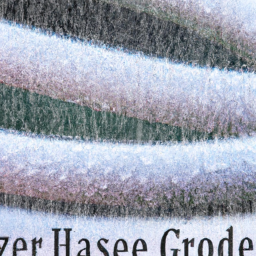What Temp Garden Hose Freeze
What Temp Will Garden Hose Freeze
Garden Hoses in Freezing Temperatures: What to Expect
A garden hose is a crucial tool for any gardener. And depending on where you live, extreme winter weather may include temperatures that dip low enough to freeze your garden hoseor worse, potentially burst it. But what exactly is the temperature at which this can happen and, more importantly, what can you do to protect your hose from cold weather? Let's take a look at a few key themes to better understand what to expect when garden hoses encounter freezing temperatures.
What Temperature Will a Garden Hose Freeze?
Garden hoses are typically made of plastic or rubber, two materials that start to become rigid in temperatures of around 40F and below. However, garden hoses may freeze and potentially burst at temperatures of 32F or colder, depending on the length of the hose, its diameter and thickness, as well as the volume and pressure of the water inside. Additionally, any water remaining in the hose is at a higher risk of freezing and bursting the hose.
How Can You Protect Your Garden Hose in Winter?
The simplest way to protect your hose is to store it in a warm indoor location when temperatures are expected to drop below freezing. If you must leave your hose outside, then here are a few steps you can take to help keep it from freezing:
Insulation:
Wrapping your hose with insulation will help keep the temperature inside the hose warmer. When temperatures are particularly frigid, you can also use a heating device to create a temperature-controlled environment surrounding the hose.
Drainage:
Be sure to drain your hose completely to avoid having water leftover and leaving only a minimal amount inside after use. Additionally, you can store the hose in an upright position and promoting drainage.
Extend Lifespan:
To help extend the lifespan of your hose, you may want to consider purchasing one made of UV-resistant material, such as vinyl. Not only do materials such as vinyl provide improved durability, but they're often more lightweight than rubber, making your hose that much easier to move, store and manage.
When Is It Safe to Use a Garden Hose Again?
Even if you've safely protected your hose from freezing temperatures, you might still want to avoid using the hose until temperatures have risen above 40F. If you attempt to use a frozen hose, it's possible that it could break under the high internal pressures generated by the warm water.
Final Word
Although you may feel the urge to use your garden hose like clockwork regardless of the temperatures, it's essential to take the necessary measures to protect it from freezing temperatures. Not only will it help prevent damaging the hose, but it will also increase the lifespan of the hose and prevent costly replacements. Keeping a close eye on the weather forecast and taking simple steps such as insulation and mounting a heating device nearby can go a long way in protecting your garden hose.
Takeaways
- Garden hoses can freeze at and below temperatures of 32F.
- To protect your hose from freezing, you can store it in a warming environment or make use of insulation and a long-lasting material such as vinyl when storing the hose outside.
- When temperatures have risen above 40F, your garden hose may be ready for use again.

Previous Page
Next Page
